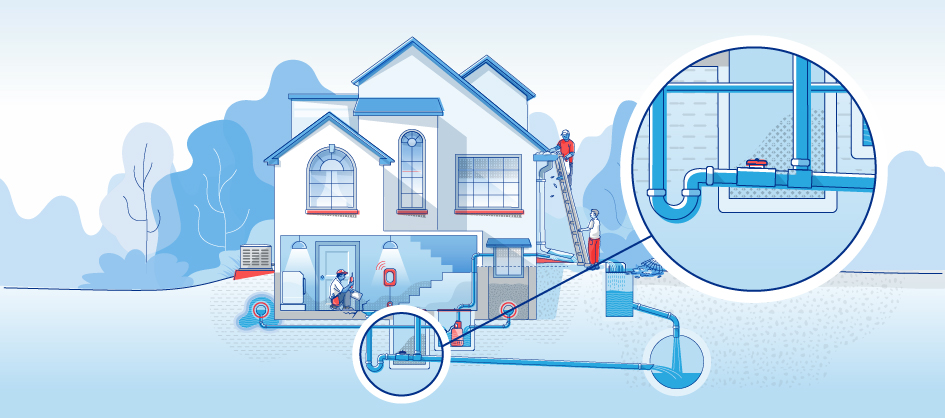All
Protecting Your Home Against Flooding: The Backstory on Backwater Valves
January 30, 2025
3 minute read

Floods are Mother Nature’s most common ways to cause property damage. Not only can flooding happen any time of year, but 80% of Canada’s major cities are situated in partial or complete flood zones. There are preventative measures that you can take to minimize your risk of damage from flooding. An additional option to prevent some forms of basement flooding and sewer backup is a backwater valve. With one installed in your home, you can rest a little easier knowing you have an extra layer of protection to help keep sewage out of your home. Here are some things to know about backwater valves.
What is a backwater valve?
A sanitary backwater valve—also called a sewer backup valve—is installed on your sewer line to prevent water and sewage from flowing back into your house when the water pressure outside is stronger than the pressure inside. Without a backwater valve, contents from the municipal sewer system can flow back into your home’s floor drain, toilets, shower, bathtubs or sinks.
How should a backwater valve be installed?
The manufacturer of your backwater valve will have specific instructions about where to install it. It’s important to follow these because if placed in the wrong location the valve could be bypassed and provide no protection. That can lead to sewer backup pressure building up, which can crack the basement floor and cause flooding.
If your weeping tiles are still connected to the sewer pipes running through your home and are downstream of your backwater valve, sewage could flow back into your weeping tiles and cause damage to your home’s foundation. That can also lead to flooding. Get your backwater valve installed by a licensed and insured professional to ensure it is put in the right place, follows the municipality guidelines and will work properly.
How can I tell if my backwater valve is working?
Like other home appliances, backwater valves require some maintenance to ensure they keep working properly. This is a job best left for a certified plumber. What you can do is check if anything is clogging it—most mainline backwater valves have see-through tops, which make this easy.
What to know about backwater valves during heavy rainstorms.
If you have a backwater valve, during intense rain, don’t use the plumbing inside your home until the rain has lessened and your backwater valve has opened again. This means you should avoid flushing toilets, running dishwashers, washing machines, or running water from the taps. If you use the plumbing while the backwater valve is closed, water will have no way to exit your home until the valve reopens. If you’re not sure if the valve is closed, check it. You should be able to see it through the clear top.
Municipal financial support.
Many local governments recognize the benefits of backwater valves in preventing basement flooding and reducing strain on the infrastructure. That’s why some encourage installations by offering financial incentives. Be sure to ask if your municipality provides one.
Your home is one of the biggest investments you’ll ever make, so it’s essential to do everything you can to protect it. Restoring your home after a sewer backup can be both stressful and expensive, not to mention time-consuming. Installing a backwater valve and ensuring that it’s working properly is an easy way to help prevent sewage from entering and damaging your home.
This advice is intended to provide general information only and is not intended to provide legal or professional advice, or to be relied on in any dispute, claim, action, demand or proceeding. CAA Insurance Company does not accept liability for any damage or injury resulting from reliance on this information.
